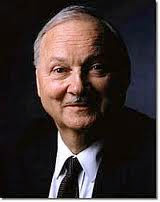How the United Nations is quietly being turned into a public-private partnership
Guest blog by Harris Gleckman is Senior Fellow at the Center for Governance and Sustainability, UMass-Boston and Director of Benchmark Environmental Consulting.
He is the former Chief of the NY Office of UNCTAD, Senior Officer for the first Financing for Development Conference, and Chief of the Environmental Unit of the Centre on Transnational Corporations. Over a period of 30 years, he undertook policy oriented research on multinational corporations, global environmental management, financing for development, global governance institutions, and the economics of climate change. Dr Gleckman’s latest study: Multistakeholder Governance and Democracy: A Global Challenge was published by Routledge on Oct 2018. This was originally published in Open Democracy here.
 The timing and managing of public perceptions are not the only interesting aspect of this arrangement. In 2009, the WEF published a 600 page report entitled the Global Redesign Initiative, which called for a new system of global governing, one in which the decisions of governments could be made secondary to multistakeholder led initiatives in which corporations would play a defining role. In a sense this WEF study recommended a sort of public-private United “Nations” – something that has now been formalized in this MOU. The agreement announces new multistakeholder partnerships to deliver public goods in the fields of education, women, financing, climate change, and health.
The timing and managing of public perceptions are not the only interesting aspect of this arrangement. In 2009, the WEF published a 600 page report entitled the Global Redesign Initiative, which called for a new system of global governing, one in which the decisions of governments could be made secondary to multistakeholder led initiatives in which corporations would play a defining role. In a sense this WEF study recommended a sort of public-private United “Nations” – something that has now been formalized in this MOU. The agreement announces new multistakeholder partnerships to deliver public goods in the fields of education, women, financing, climate change, and health.
He is the former Chief of the NY Office of UNCTAD, Senior Officer for the first Financing for Development Conference, and Chief of the Environmental Unit of the Centre on Transnational Corporations. Over a period of 30 years, he undertook policy oriented research on multinational corporations, global environmental management, financing for development, global governance institutions, and the economics of climate change. Dr Gleckman’s latest study: Multistakeholder Governance and Democracy: A Global Challenge was published by Routledge on Oct 2018. This was originally published in Open Democracy here.
A new agreement with the World Economic Forum gives multinational corporations influence over matters of global governance.
A new corporate and government marriage quietly took place last week when the leadership of the World Economic Forum (WEF) and the United Nations (UN) signed a memorandum of understanding (MOU)to partner with each other. While this MOU is proudly displayed on the WEF website, it is nowhere to be found on the UN website. The only indication on the UN website of this important new development is a picture of the pen used to sign the agreement, and two pictures of the signing ceremony.
One reason for this difference is that the UN’s corporate-centered Global Compact has received a good deal of bad press. Now the new WEF-UN agreement creates a second special place for multinational corporations inside the UN. There is no similar institutional homes in the UN system for civil society, for academics, for religious leaders, or for youth. It is hard to imagine a national government signing a similar formal partnership with one of its business organizations.
At the same time, the UN is under pressure from Donald Trump who wants to deconstruct the whole multilateral system. For Trump, dismantling the international system built after World War II is a companion piece to his domestic effort at deconstructing the administrative state. For the Secretary-General of the UN, the pact with the WEF may well be his effort to find new power actors who can support the current system, which is now celebrating its 75th anniversary, in the face of Trump’s onslaught.
On the other side, the WEF recently received significant public criticism after giving Hungarian Prime Minister Orban and Brazilian President Bolsonaro a warm welcome at its 2019 Davos gathering. This marriage may be seen as a way for the WEF to re-establish itself as part of the global governance center.
 The timing and managing of public perceptions are not the only interesting aspect of this arrangement. In 2009, the WEF published a 600 page report entitled the Global Redesign Initiative, which called for a new system of global governing, one in which the decisions of governments could be made secondary to multistakeholder led initiatives in which corporations would play a defining role. In a sense this WEF study recommended a sort of public-private United “Nations” – something that has now been formalized in this MOU. The agreement announces new multistakeholder partnerships to deliver public goods in the fields of education, women, financing, climate change, and health.
The timing and managing of public perceptions are not the only interesting aspect of this arrangement. In 2009, the WEF published a 600 page report entitled the Global Redesign Initiative, which called for a new system of global governing, one in which the decisions of governments could be made secondary to multistakeholder led initiatives in which corporations would play a defining role. In a sense this WEF study recommended a sort of public-private United “Nations” – something that has now been formalized in this MOU. The agreement announces new multistakeholder partnerships to deliver public goods in the fields of education, women, financing, climate change, and health.
The rather detailed MOU includes forms of cross organizational engagement up and down the UN structure. The MOU contains commitments that the Secretary-General himself will be invited to deliver a keynote address at the WEF annual Davos gatherings. His senior staff and the heads of the UN programmes, funds, and agencies will also be invited to participate in regional level meetings hosted by the WEF. It also contains a promise that the UN’s individual country representatives will explore ways to work with WEF’s national Forum Hubs. Aware of the mutual importance of public legitimacy each institution can provide for the other, the MOU also contains an agreement to cross-publicize their joint activities.
Besides the institutional blessing of the United Nations, what does the WEF get from the MOU? The scope of each of the five fields for joint attention is narrowed down from the intergovernmentally negotiated and agreed set of goals to one with more in line with the business interests of WEF members. So under financing, the MOU calls only for ‘build[ing] a shared understanding of sustainable investing’ but not for reducing banking induced instabilities and tax avoidance.
Under climate change, it calls for ‘ …public commitments from the private sector to reach carbon neutrality by 2050’, not actions that result in carbon neutrality by 2030 . Under education, it re-defines the Sustainable Development education goal to ‘ensure inclusive and equitable quality education’ into one that focuses on education to meet the ‘rapidly changing world of work.’ The MOU explicitly restricts the WEF from making financial contributions to the UN, which might have ameliorated the economic impact of some of Trump’s threat to the budgets of the UN system. At the same time, it avoids any commitment to reduce global inequality, to make energy affordable, to hold multinational corporations accountable for human rights violations, or even to rein in the behavior of the WEF’s firms that act inconsistently to the re-defined goals set out in the agreement.
All this joint work might have some practical good if it were not for three crucial elements: firstly, the agreement circumvents the intergovernmental review process; secondly, the agreement elevates multistakeholderism as the solution to the problems with the current multilateral system; and thirdly the proposed multistakeholder partnerships are not governed by any formal democratic system. Were the Secretary-General convinced of the wisdom of a UN marriage with the WEF, he could have submitted the draft MOU for approval by the member states. Instead, the Secretary-General joined the WEF in declaring in effect that multistakeholder groups without any formal intergovernmental oversight are a better governance system than a one-country-one-vote system.
 |
| Available here |
All multistakeholder governance groups are largely composed of a self-selected group of multinational corporations and those organizations and individuals that they want to work with. They work without any common internal rule book to protect the views of all who might be impacted by the group. Participation in multistakeholder group is a voluntary undertaking. The drop-in-drop-out arrangements are antithetical to the UN’s efforts for 75 years to build a stable secure global governance system with a clear understanding of obligations, responsibilities and liabilities.
What is surprising is that by accepting this marriage arrangement with the WEF, the Secretary-General of the UN is marginalizing the intergovernmental system in order to ‘save’ it.





Comments
Post a Comment